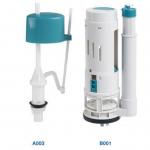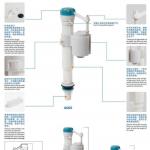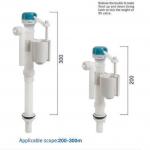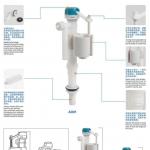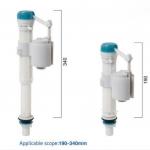Toilet Water Inlet & Outlet Valve Fittings: A Complete Guide
When it comes to toilet plumbing, the water inlet and outlet
valve fittings play a crucial role in ensuring smooth
operation and preventing leaks. Whether you're repairing an old
toilet or installing a new one, understanding these components is
essential.
In this guide, we’ll cover:
✔ Types of toilet water inlet & outlet valves
✔ How to install and replace them
✔ Common problems and fixes
✔ Best brands and materials
1. Types of Toilet Water Inlet & Outlet Valves
A. Inlet Valves (Fill Valves)
The fill valve controls the water flow into the toilet
tank after flushing. Common types include:
Float Cup Fill Valve – Adjusts water level via a floating cup.
Float Ball Fill Valve – Uses a traditional ball float (common
in older toilets).
Pressure-Assisted Fill Valve – Provides faster refilling,
ideal for commercial toilets.
B. Outlet Valves (Flush Valves)
The flush valve releases water from the tank into the
bowl. Key types are:
Flapper Valve – A rubber seal that lifts when flushing (common
in residential toilets).
Tower Flush Valve – Uses a vertical cylinder for a stronger
flush.
Dual Flush Valve – Allows partial or full flush for water
efficiency.
2. How to Install or Replace Toilet Valves
Tools Needed:
Adjustable wrench
Plumber’s tape
Replacement valve kit
Bucket & sponge
Step-by-Step Installation:
Turn off the water supply and drain the tank.
Disconnect the old fill valve and remove it.
Install the new fill valve, adjusting the height as needed.
Attach the water supply line and secure it tightly.
Replace the flush valve by removing the old flapper or tower
mechanism.
Test for leaks and adjust water levels if necessary.
Professional Toilet Tank Fitting for Consistent Water Flow and
Effortless Installation Experience
